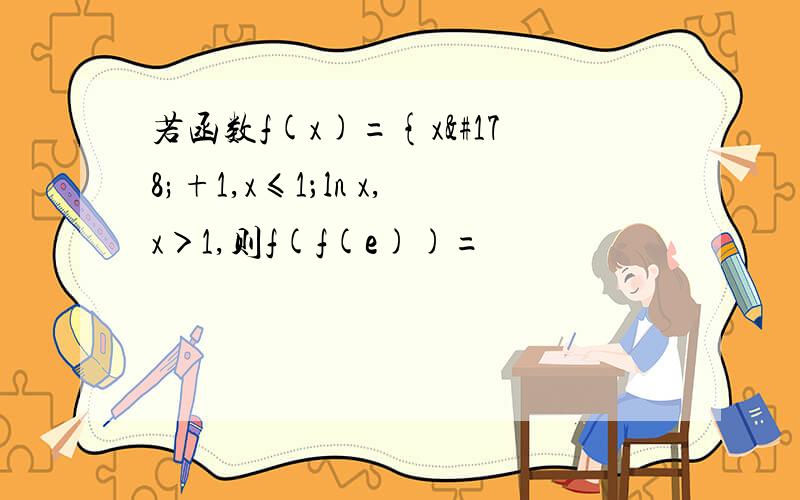若函数f(x)={x²+1,x≤1;ln x,x>1,则f(f(e))=
来源:学生作业帮 编辑:神马作文网作业帮 分类:综合作业 时间:2024/11/20 14:51:56
若函数f(x)={x²+1,x≤1;ln x,x>1,则f(f(e))=
A.0 B.1 C.2 D.ln(e²+1)
A.0 B.1 C.2 D.ln(e²+1)

结果是2,需要详解吗?首先e是大于1的,所以f(e)=ln(e)=1F(f(e))=f(1)=1+1=2
若函数f(x)={x²+1,x≤1;ln x,x>1,则f(f(e))=
已知函数f(x)=e^x-ln(x+1).
f(x)=e^x-ln(x+m)-1,若x=0,函数f(x)取得极值
函数f(x)=ln(x+1)-f(0)x-f’(0)x²+2,若f(x)≤x²+ax+b,求(b-3
f(x)=ln(1+x)/x //ln(1+x)
已知函数f(x)=ln(x+m),g(x)=e^x-1,F(x)=g(x)-f(x)在x=0处取得极值.
已知函数f(x)=ln(1+e^x)+x,x属于R
已知函数f(x)=ln[e^x-e^(-x)],则f(x)是
已知函数f(x)=e^x-ln(x+1)①求函数f(x)的最小值②已知0
已知函数f(x)=1/2(1+x)²-ln(1+x) (1)求f(x)单调区间 (2)若x∈[(1/e)-1,
导数题:已知函数F(x - 1/x)=ln x ,求F(x)的导数.
已知函数f(x)=ax-ln(-x),x属于【-e,0),其中e是自然对数底数.当a=-1时证明f(x)+ln(-x)/